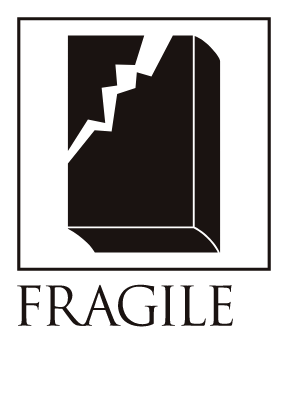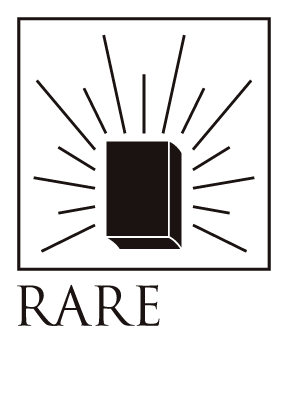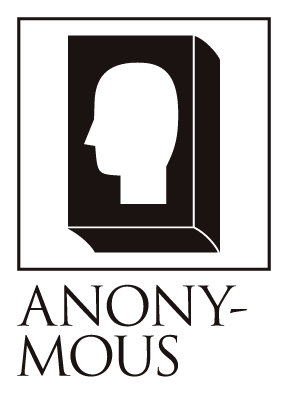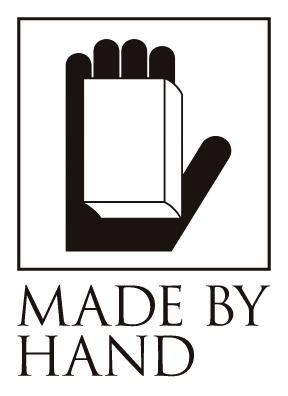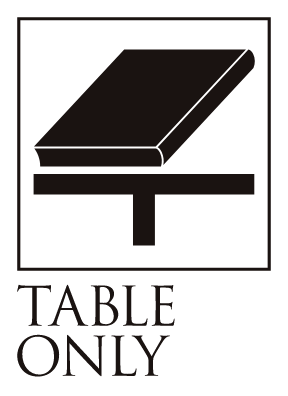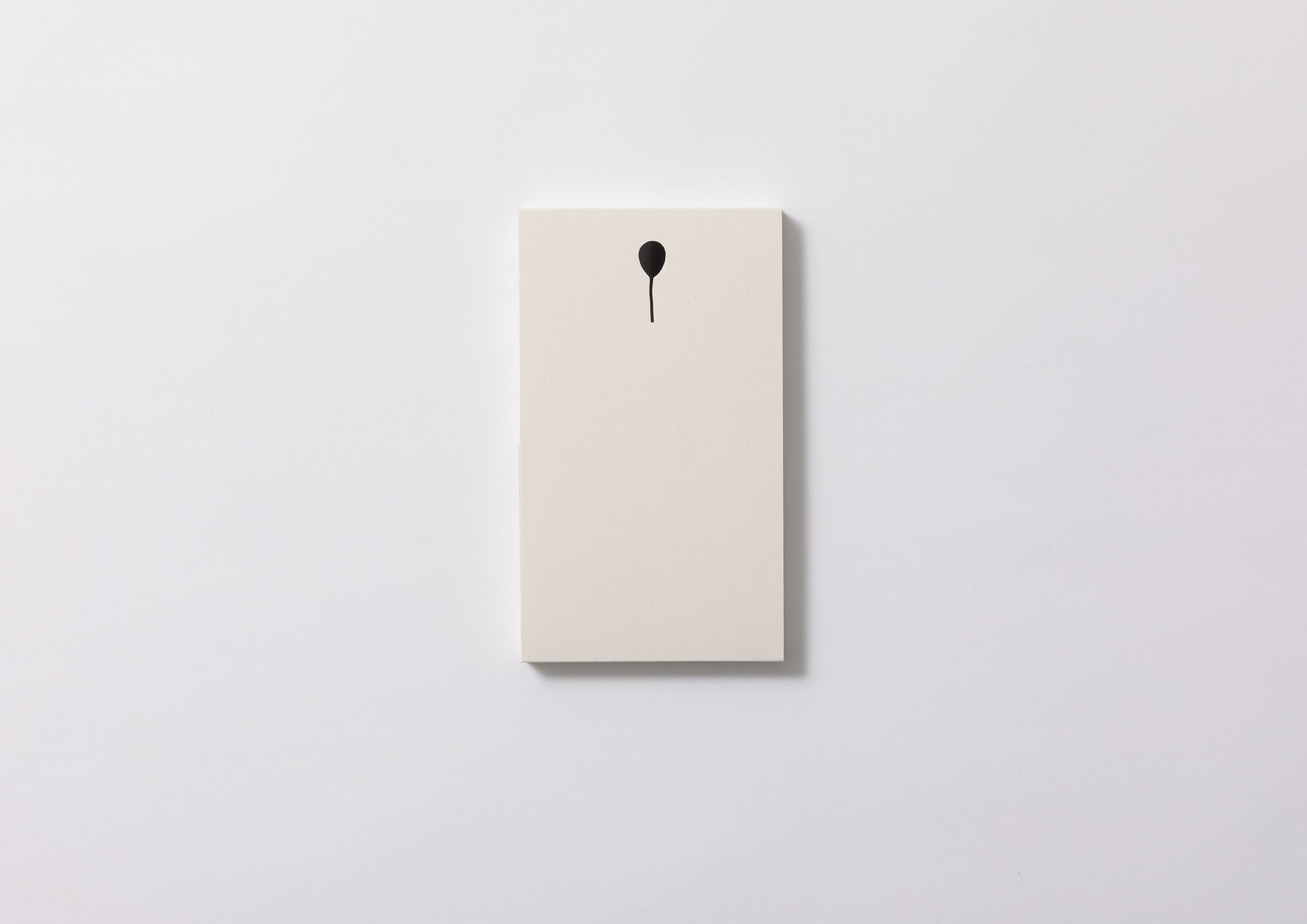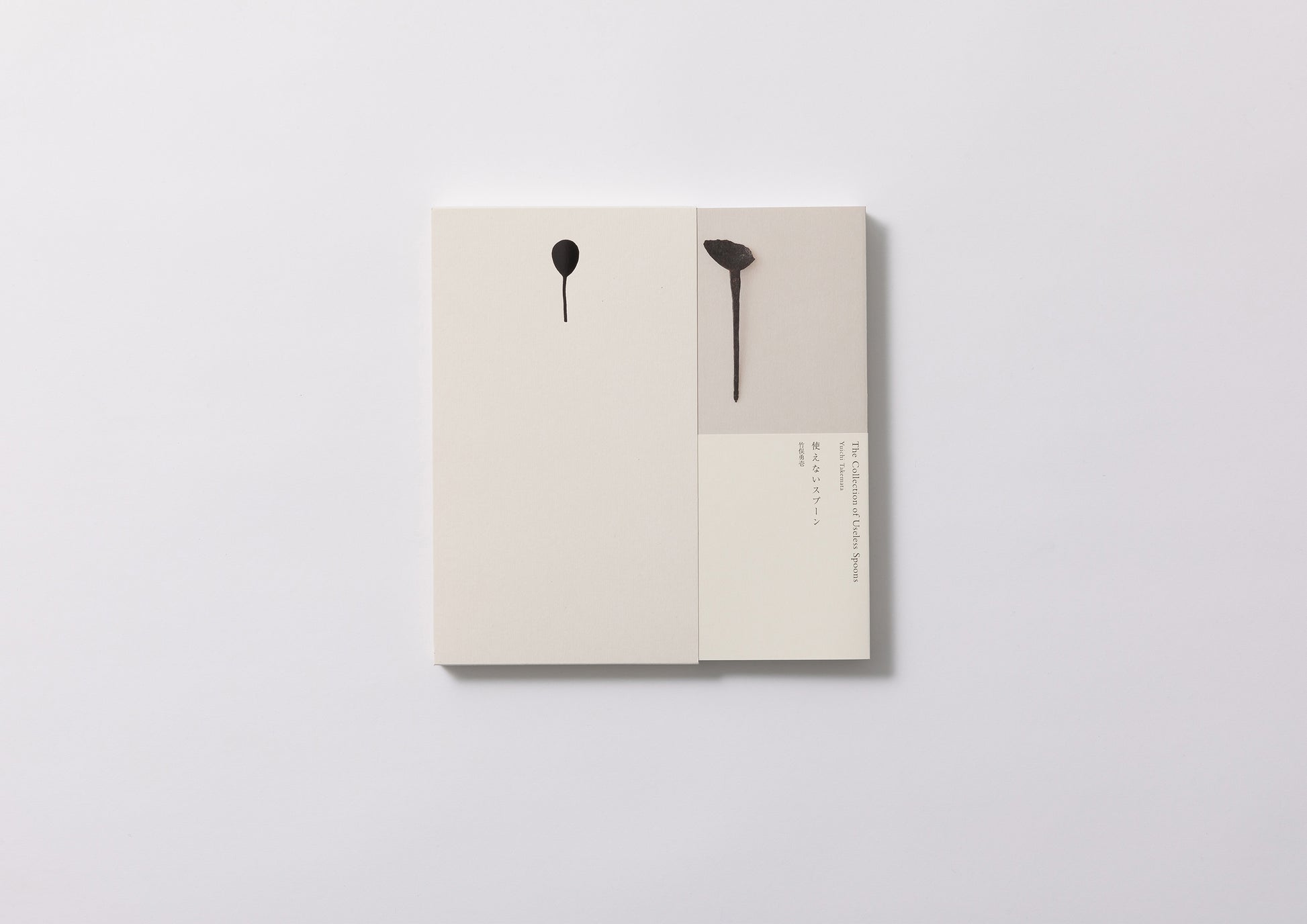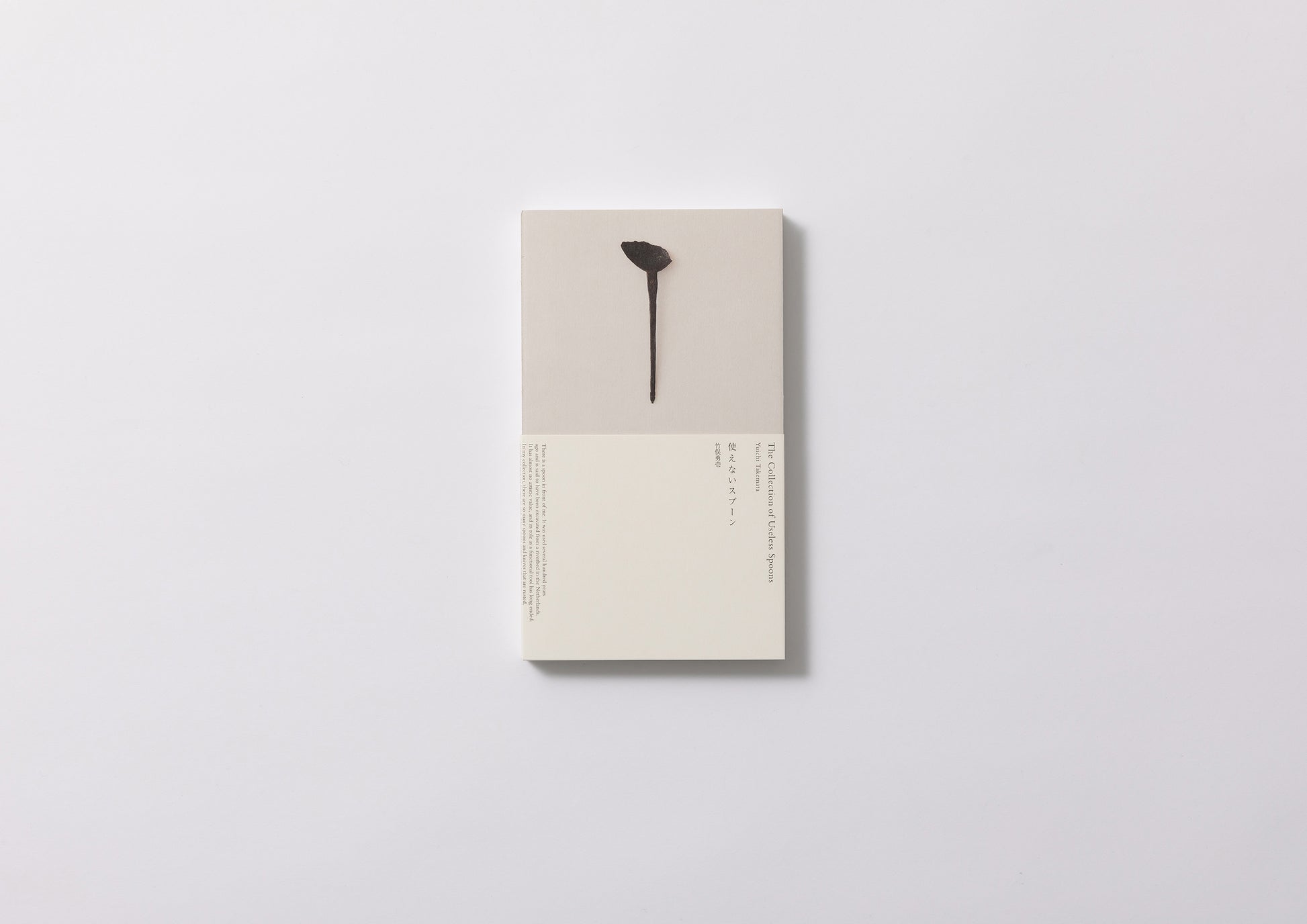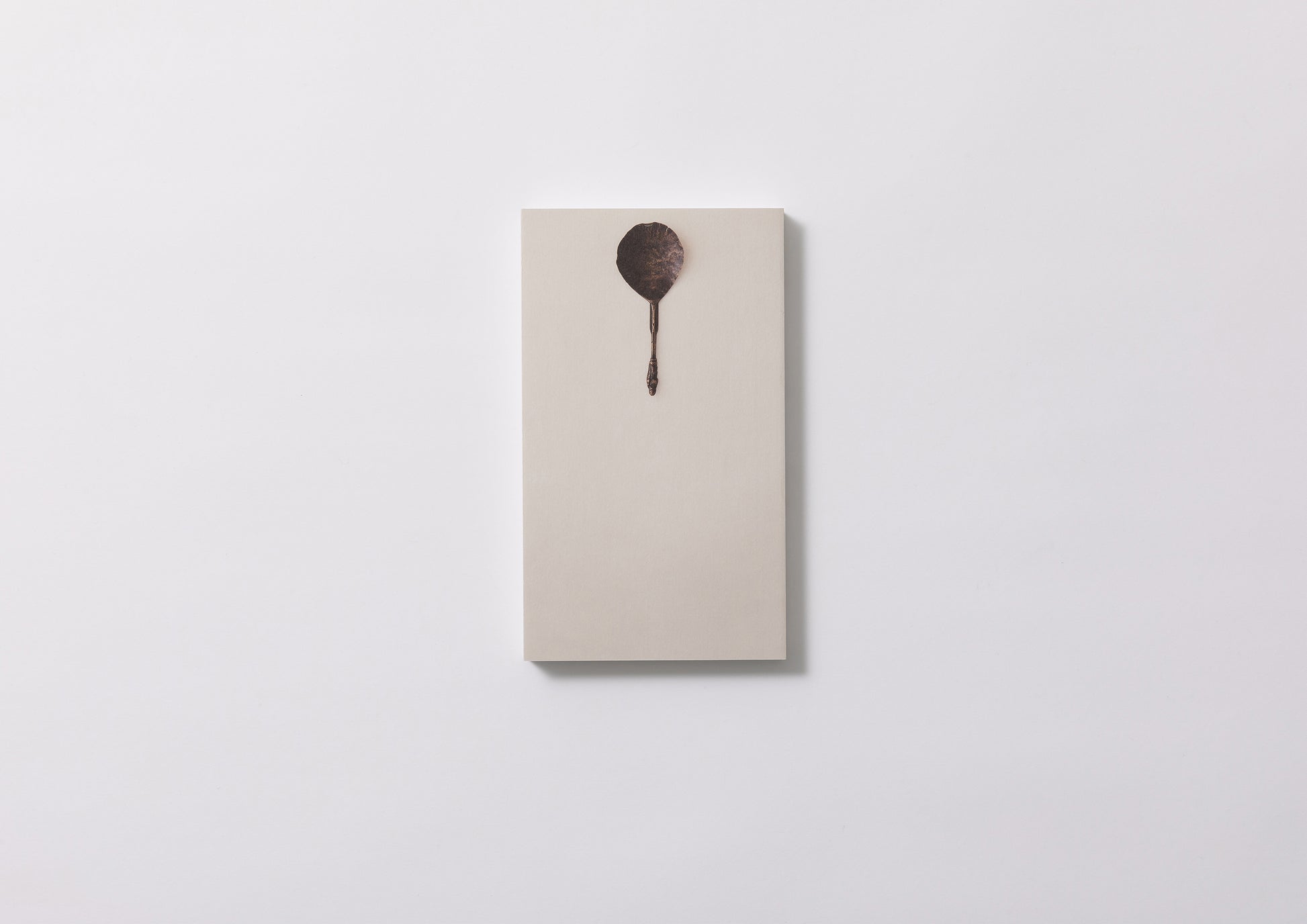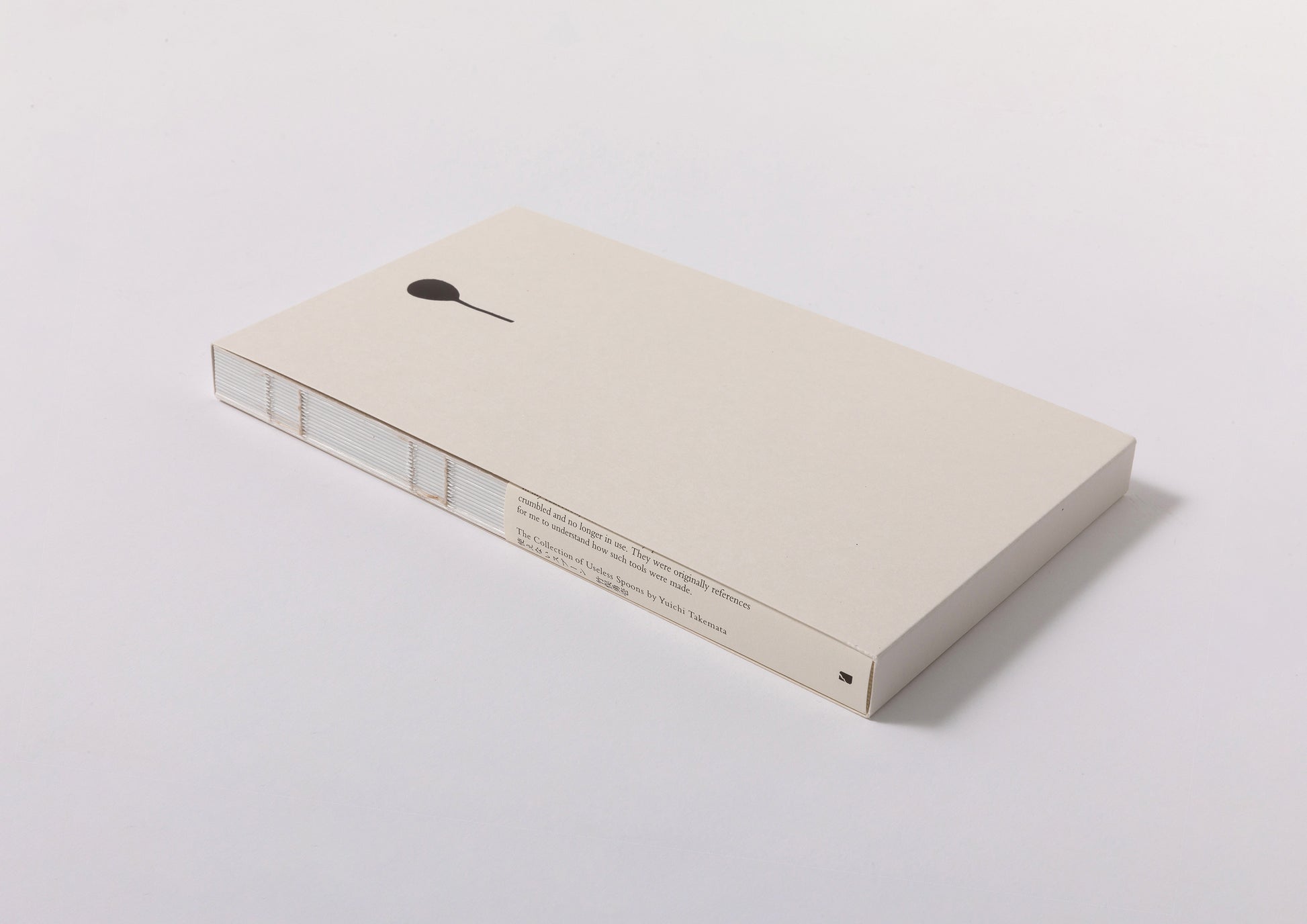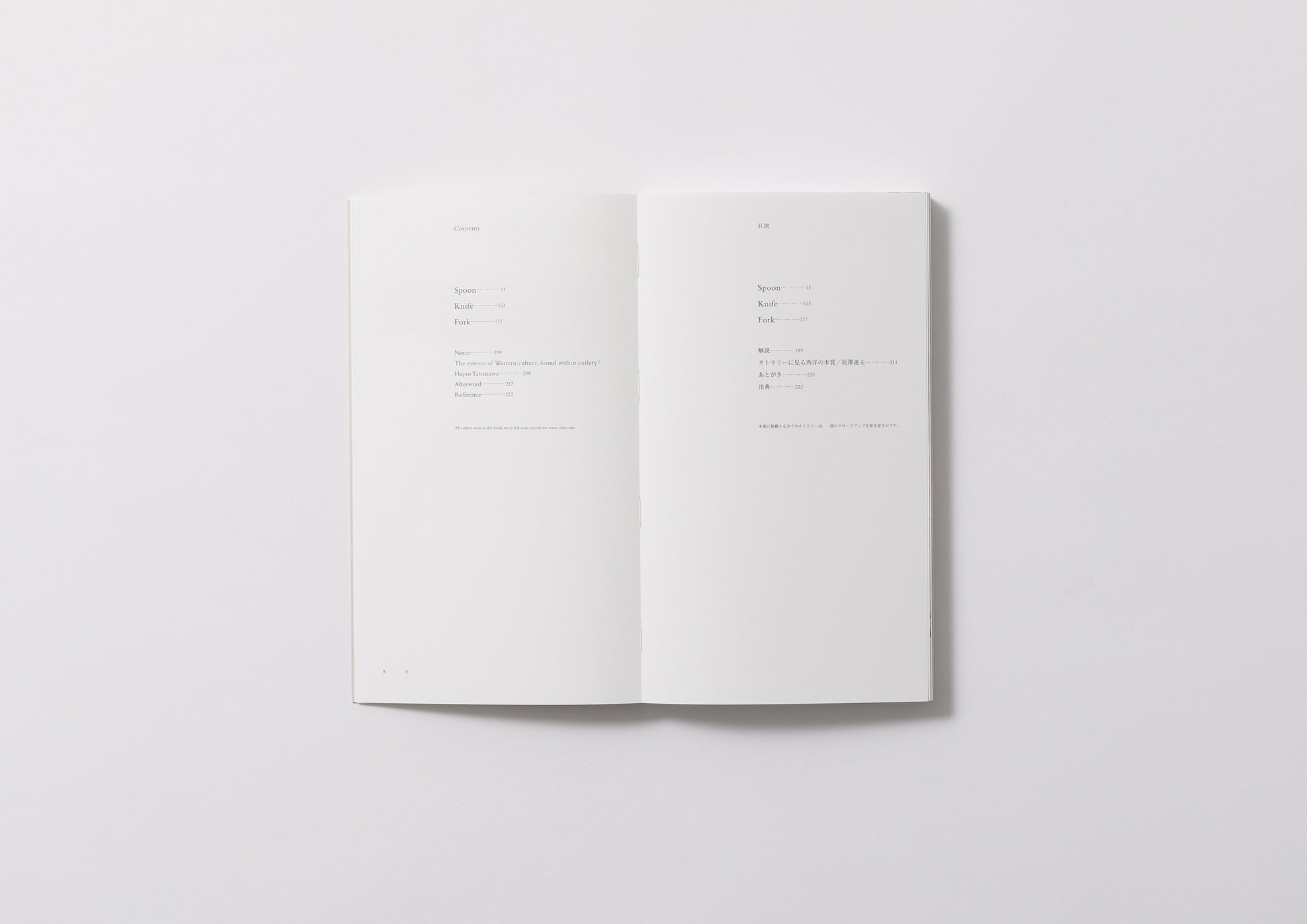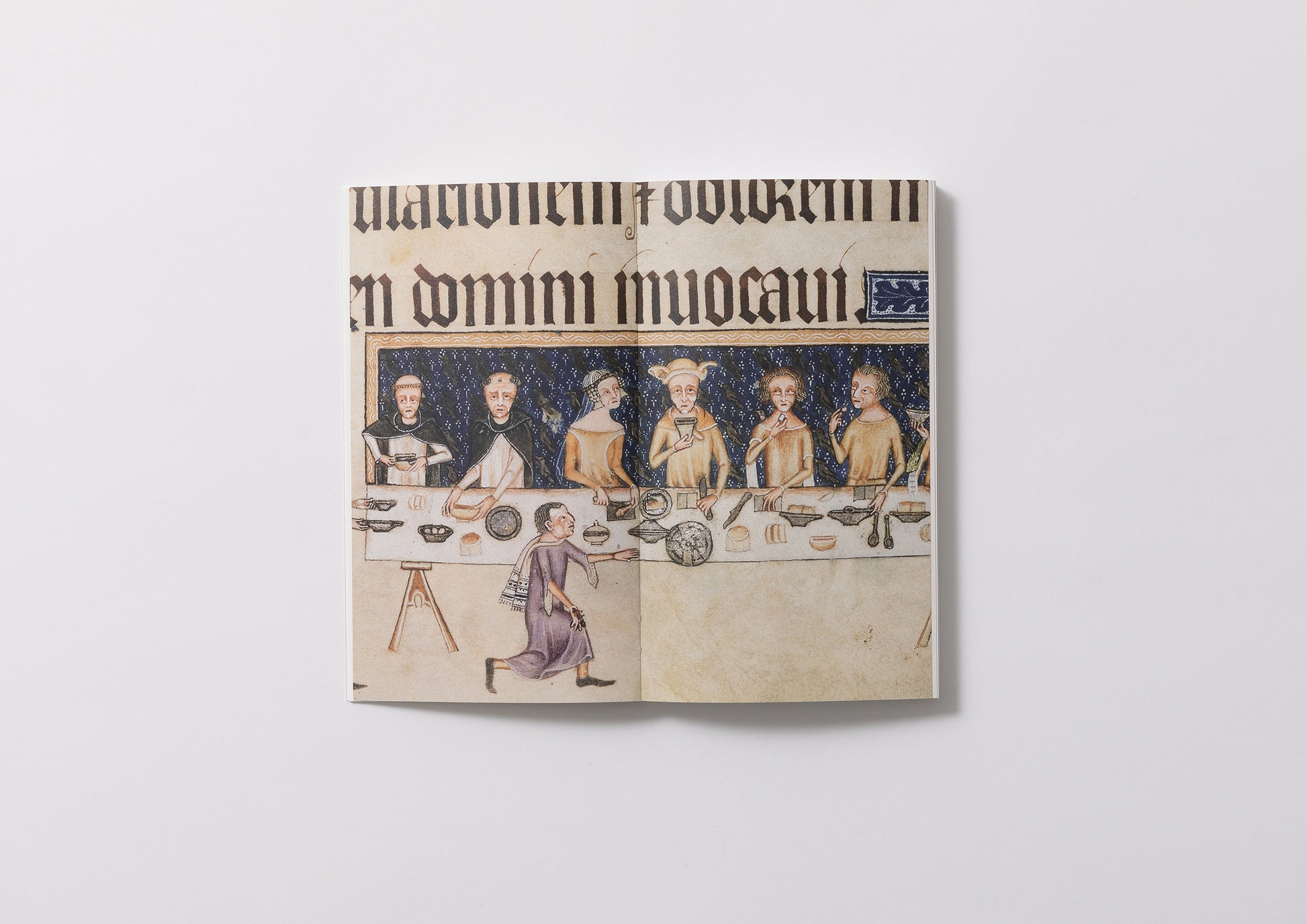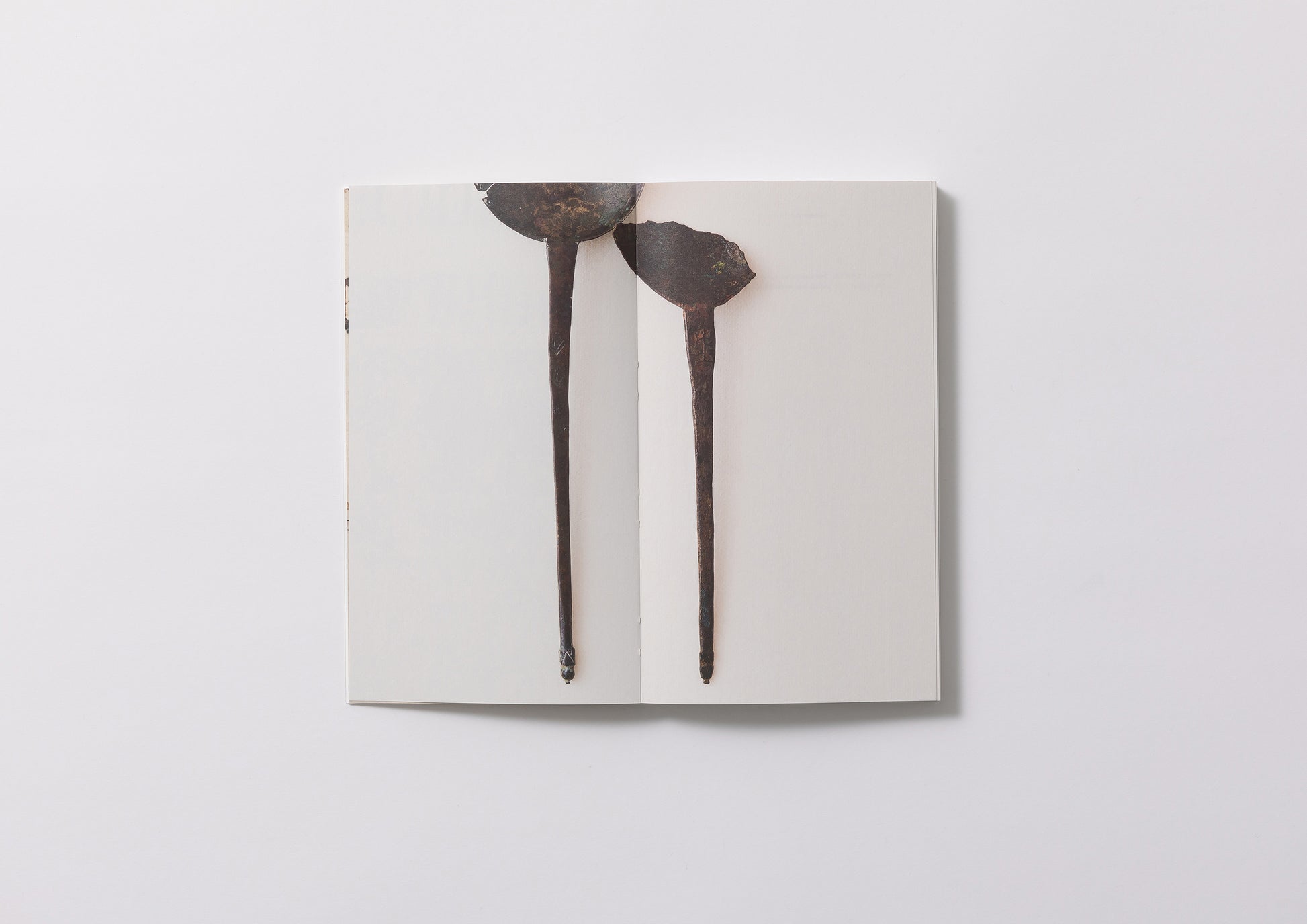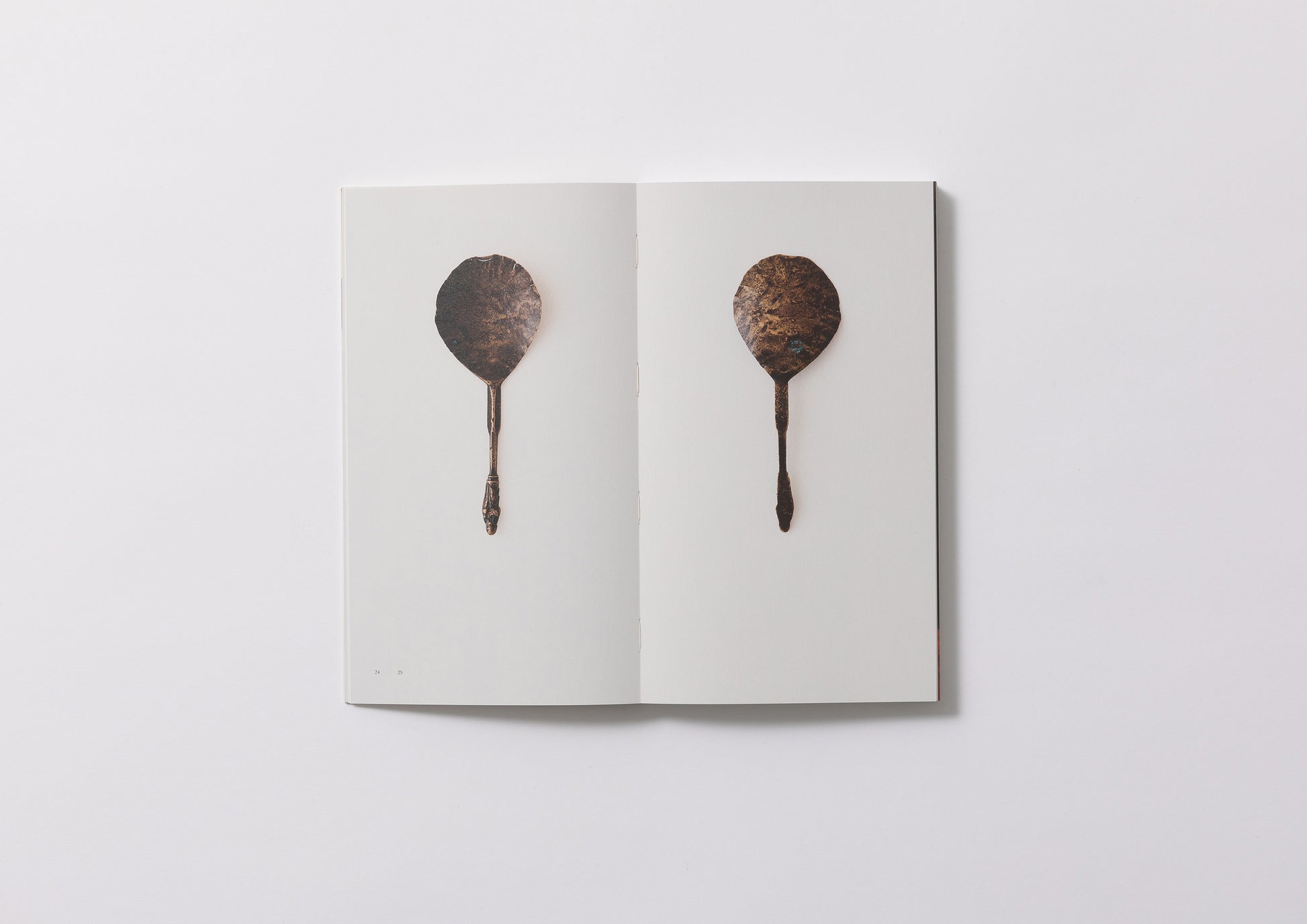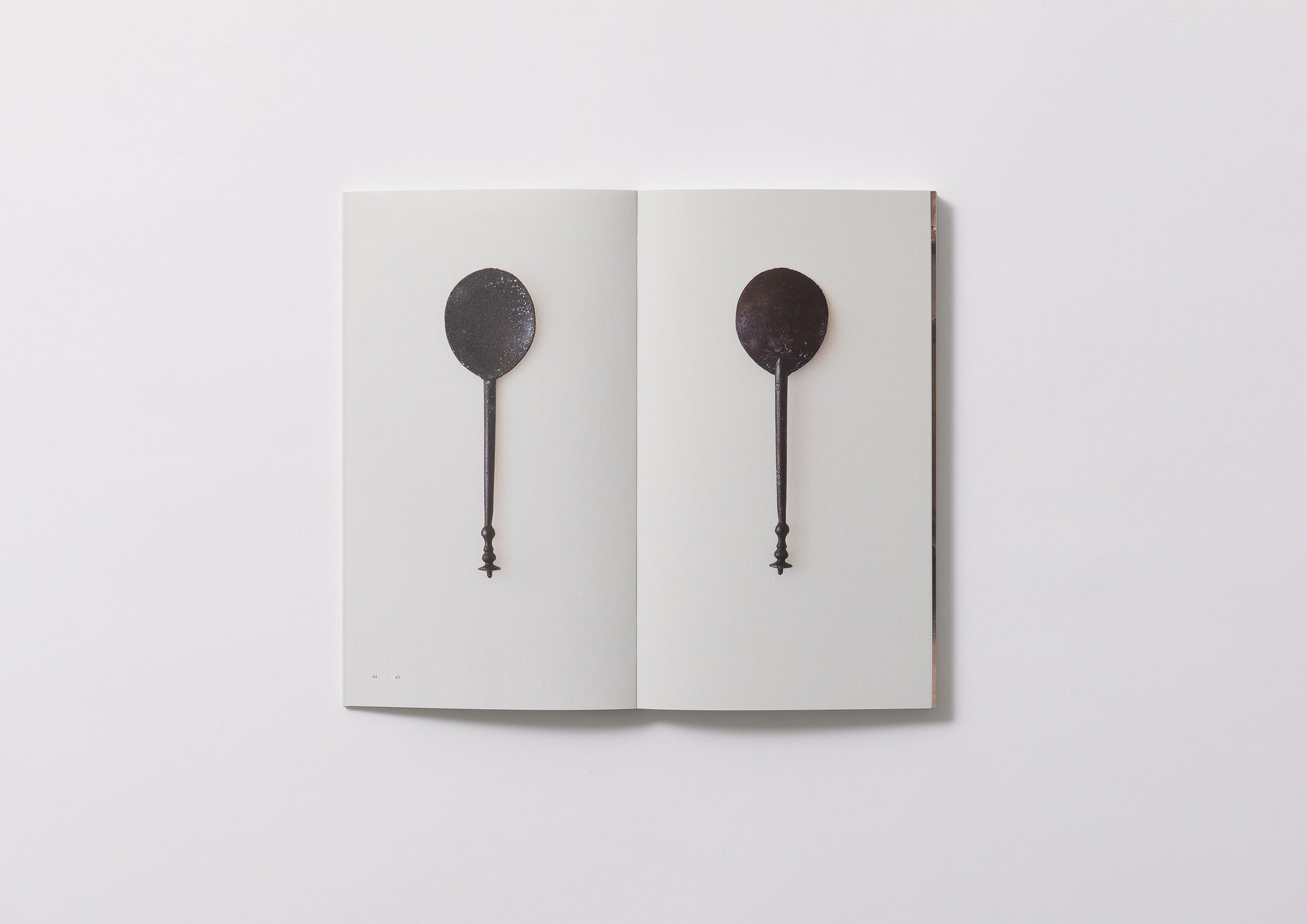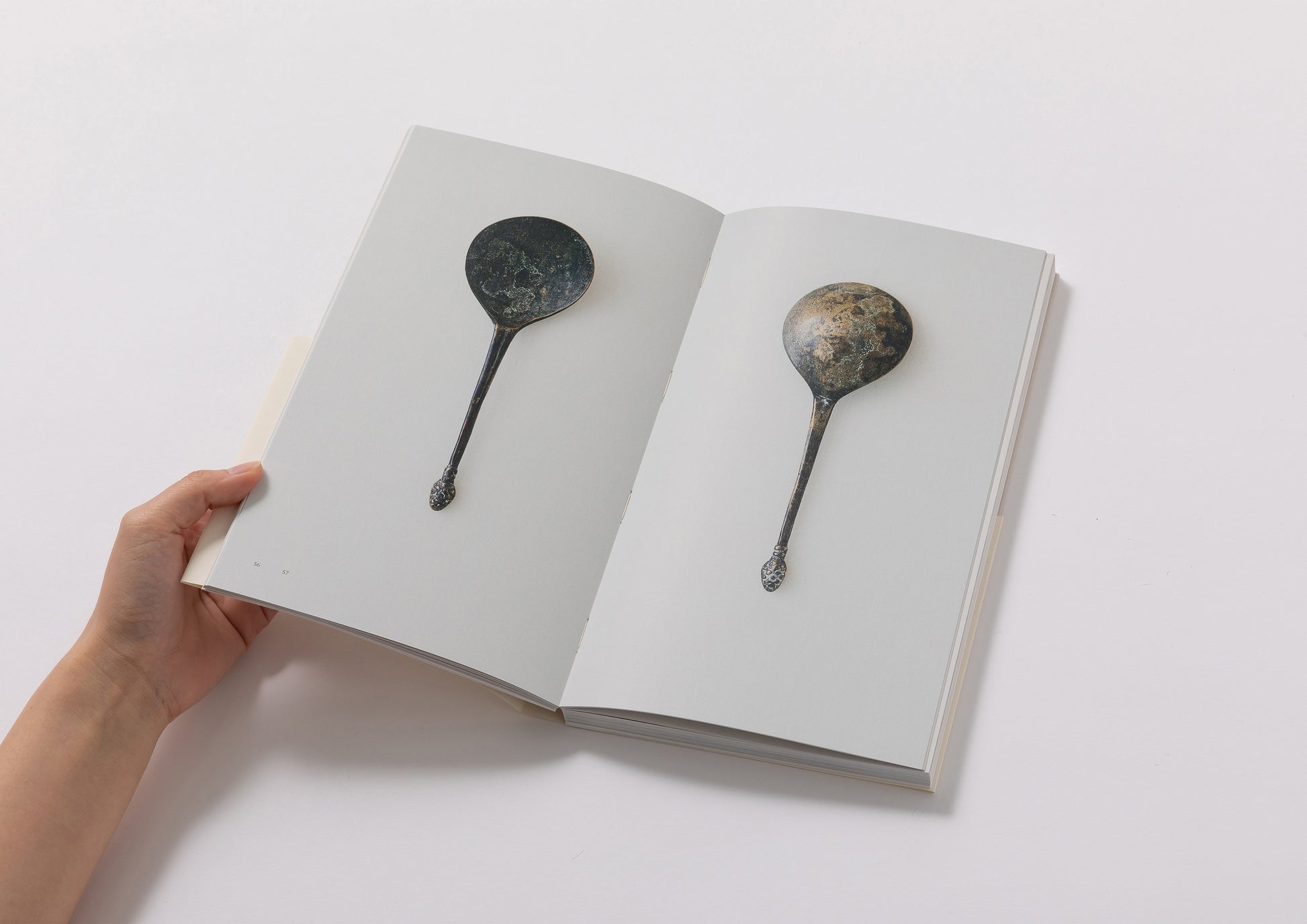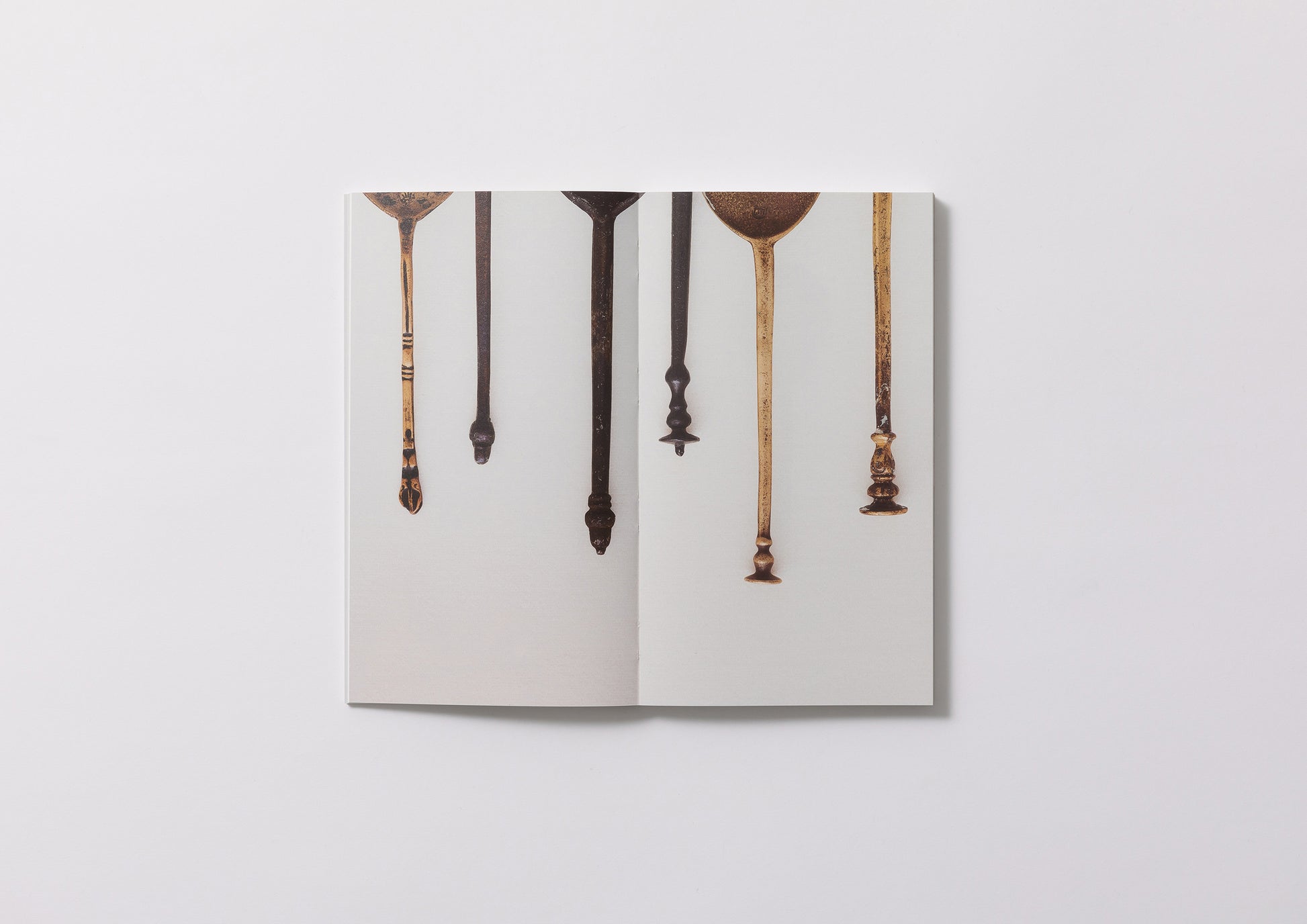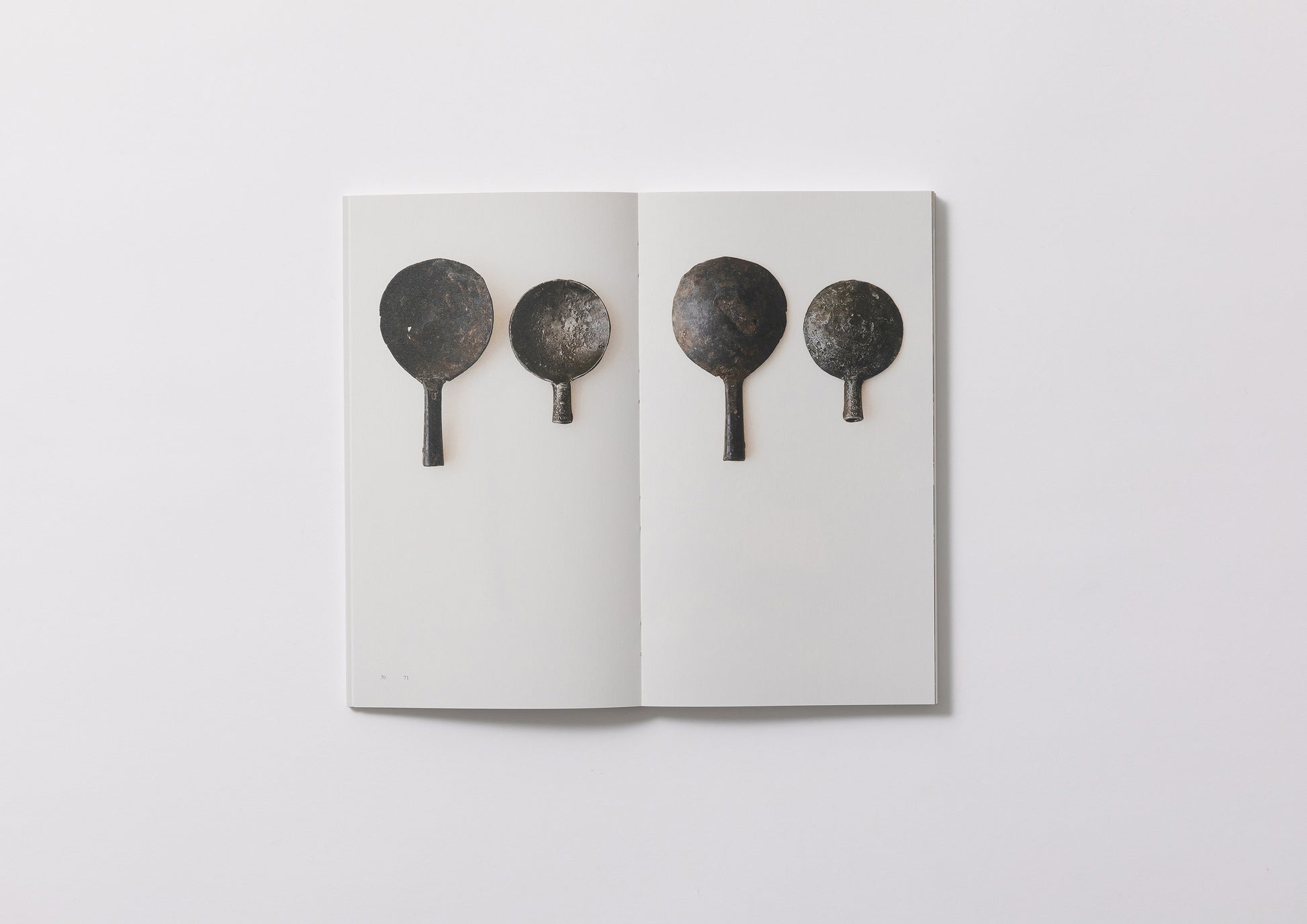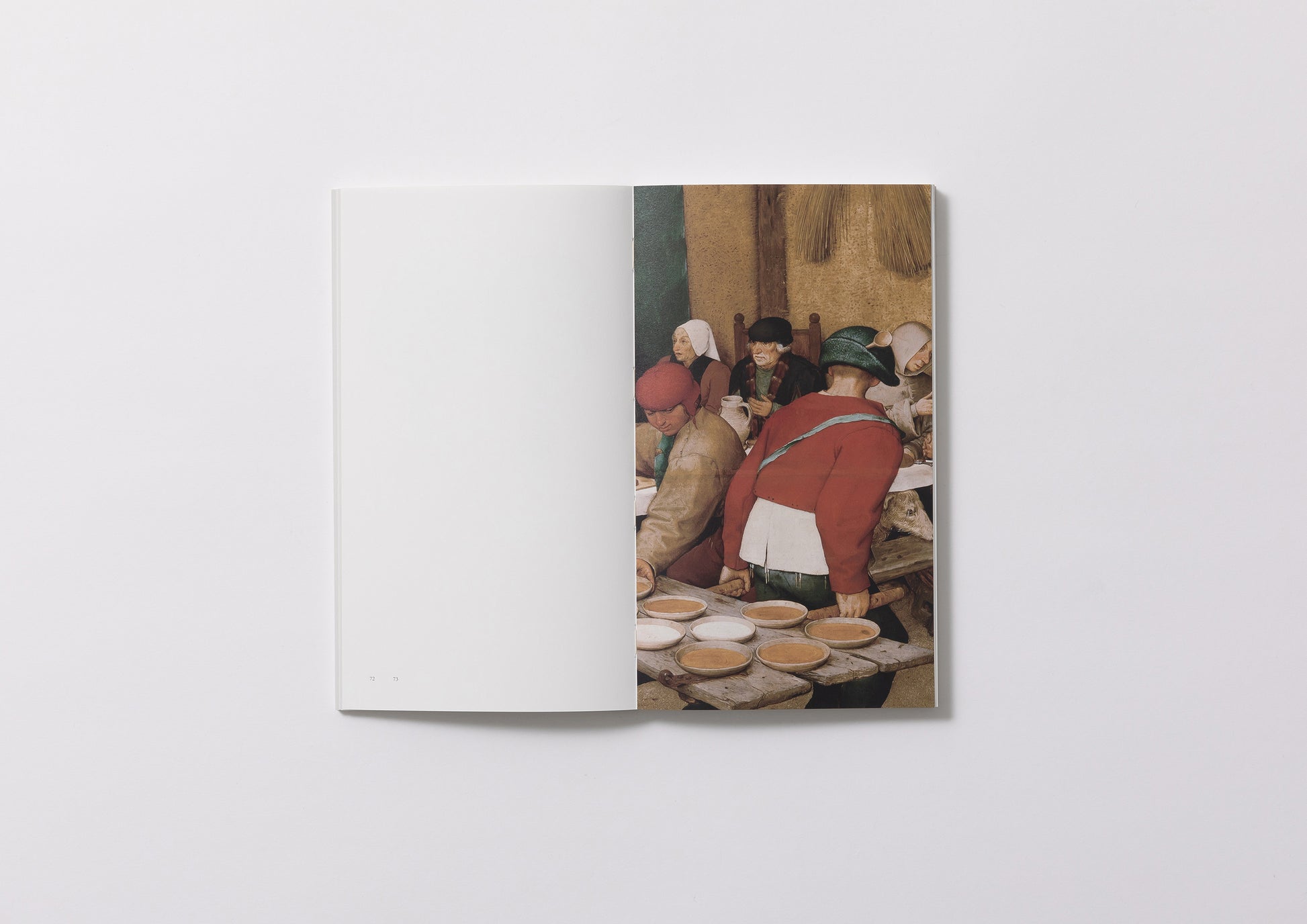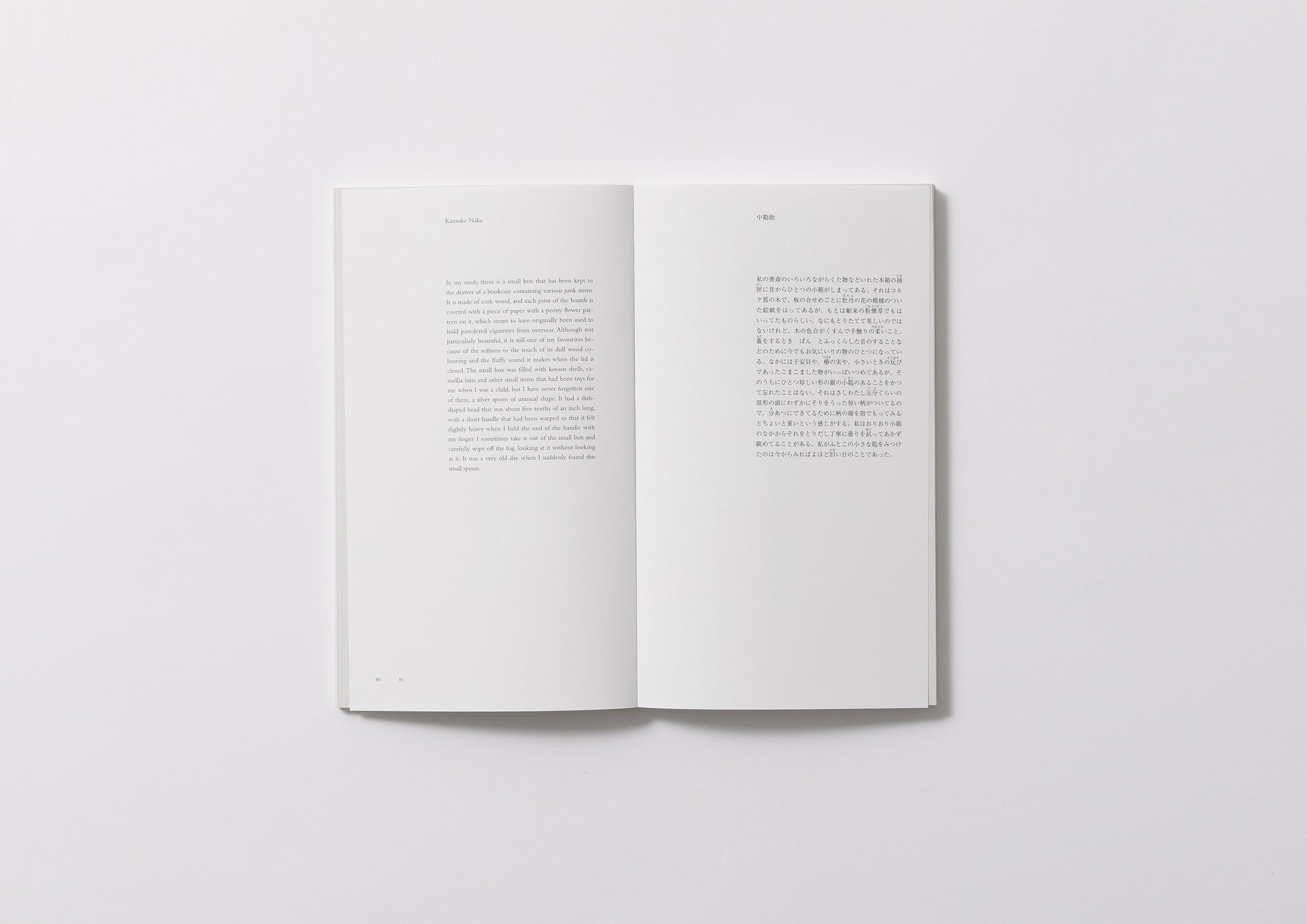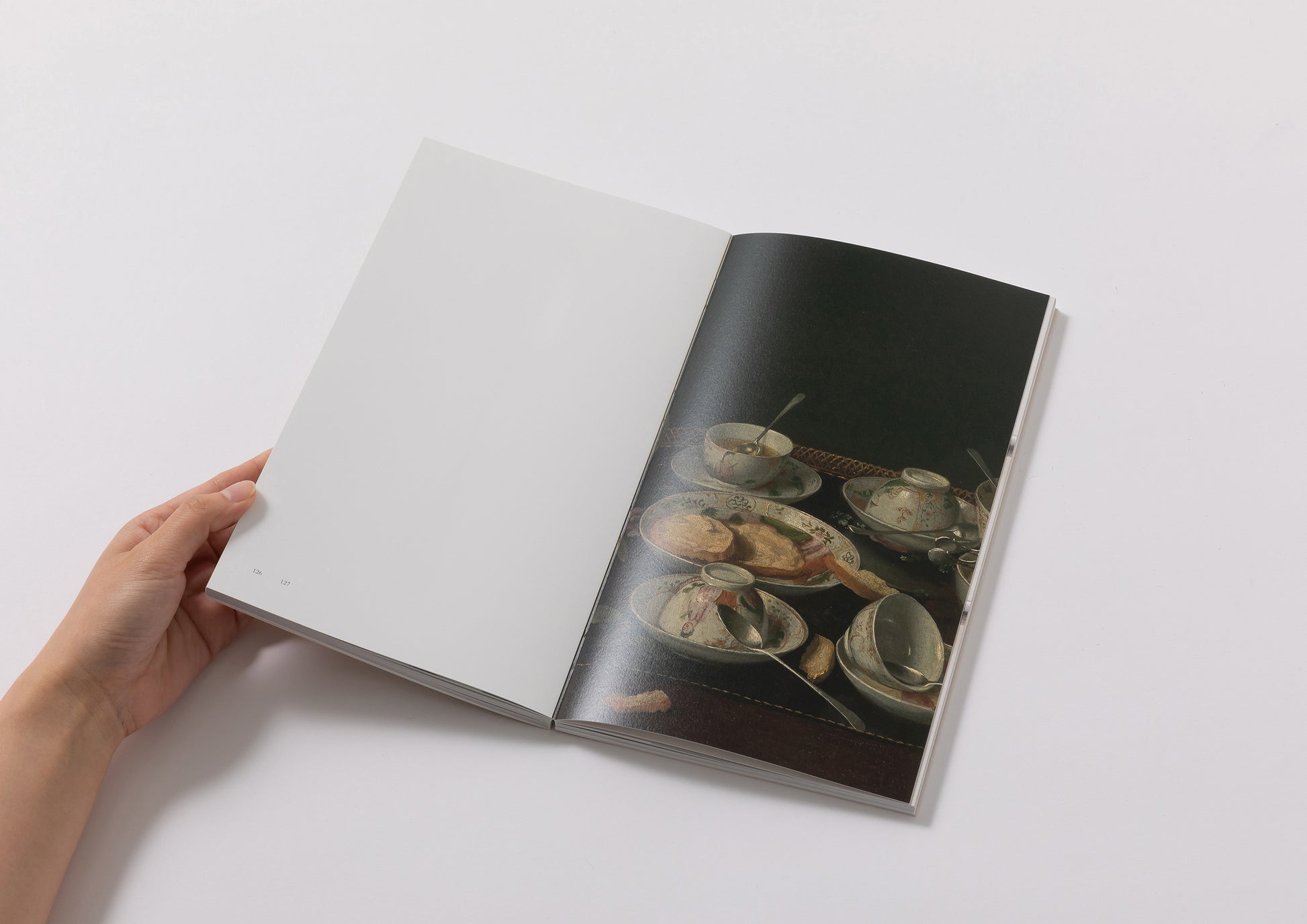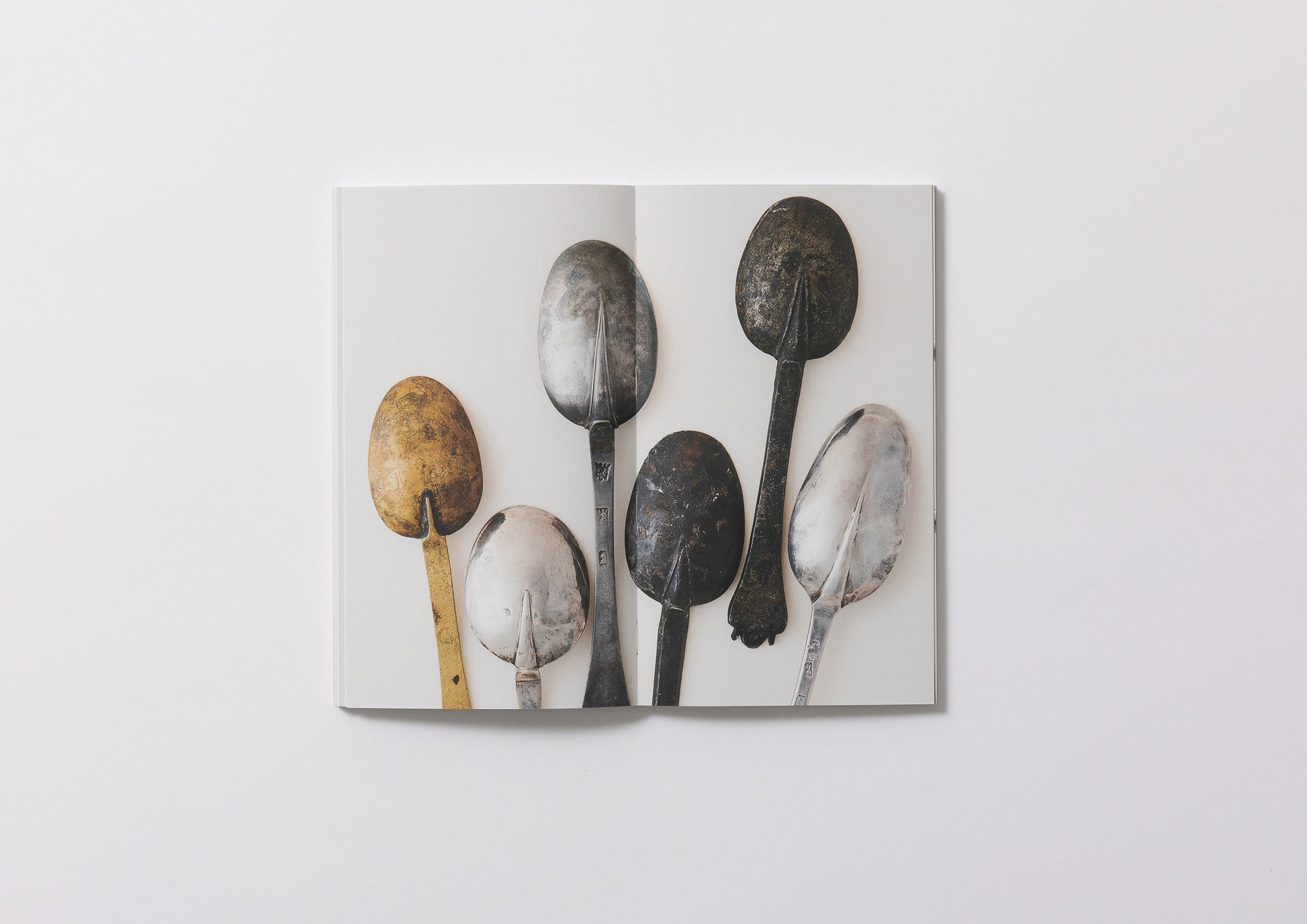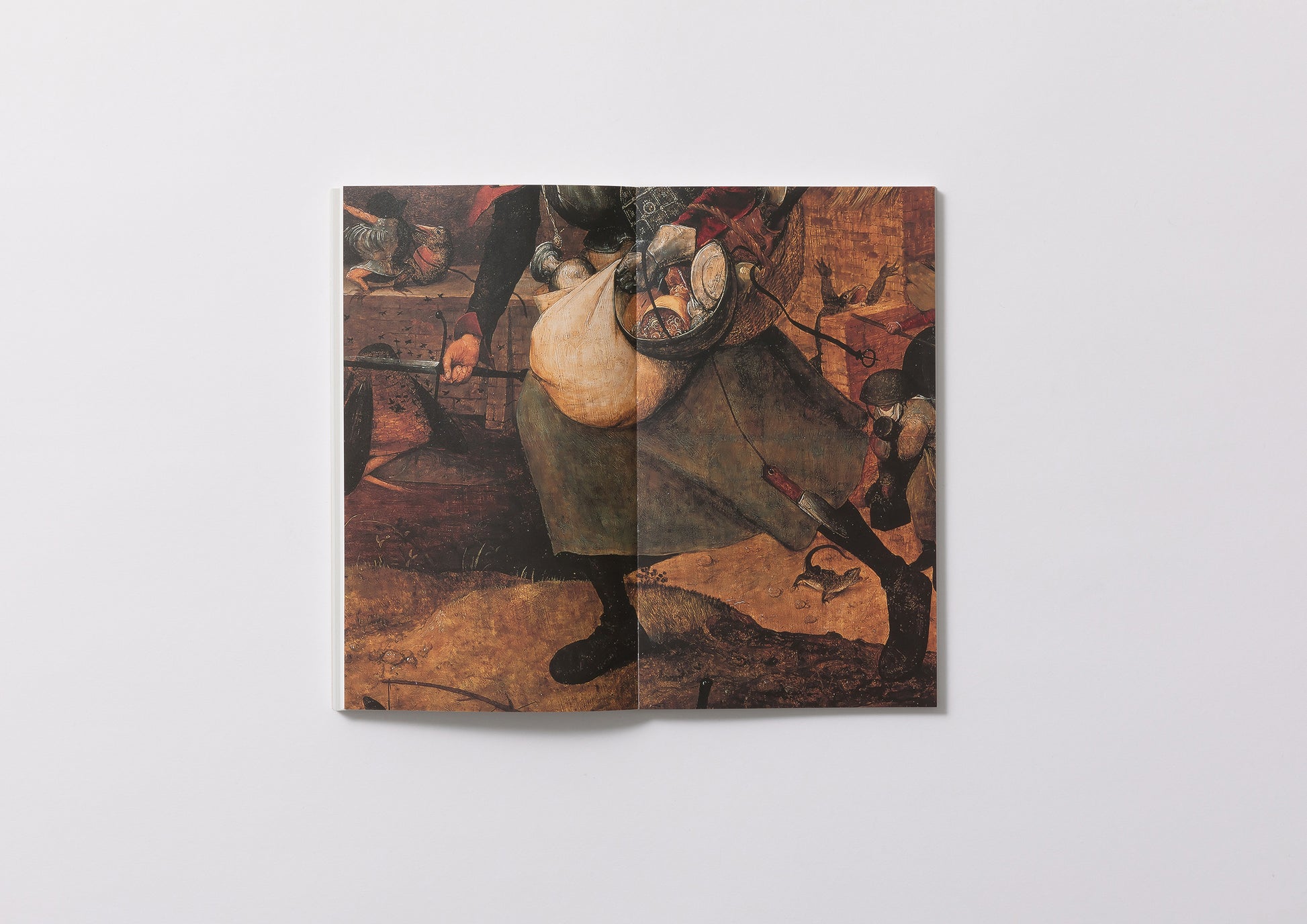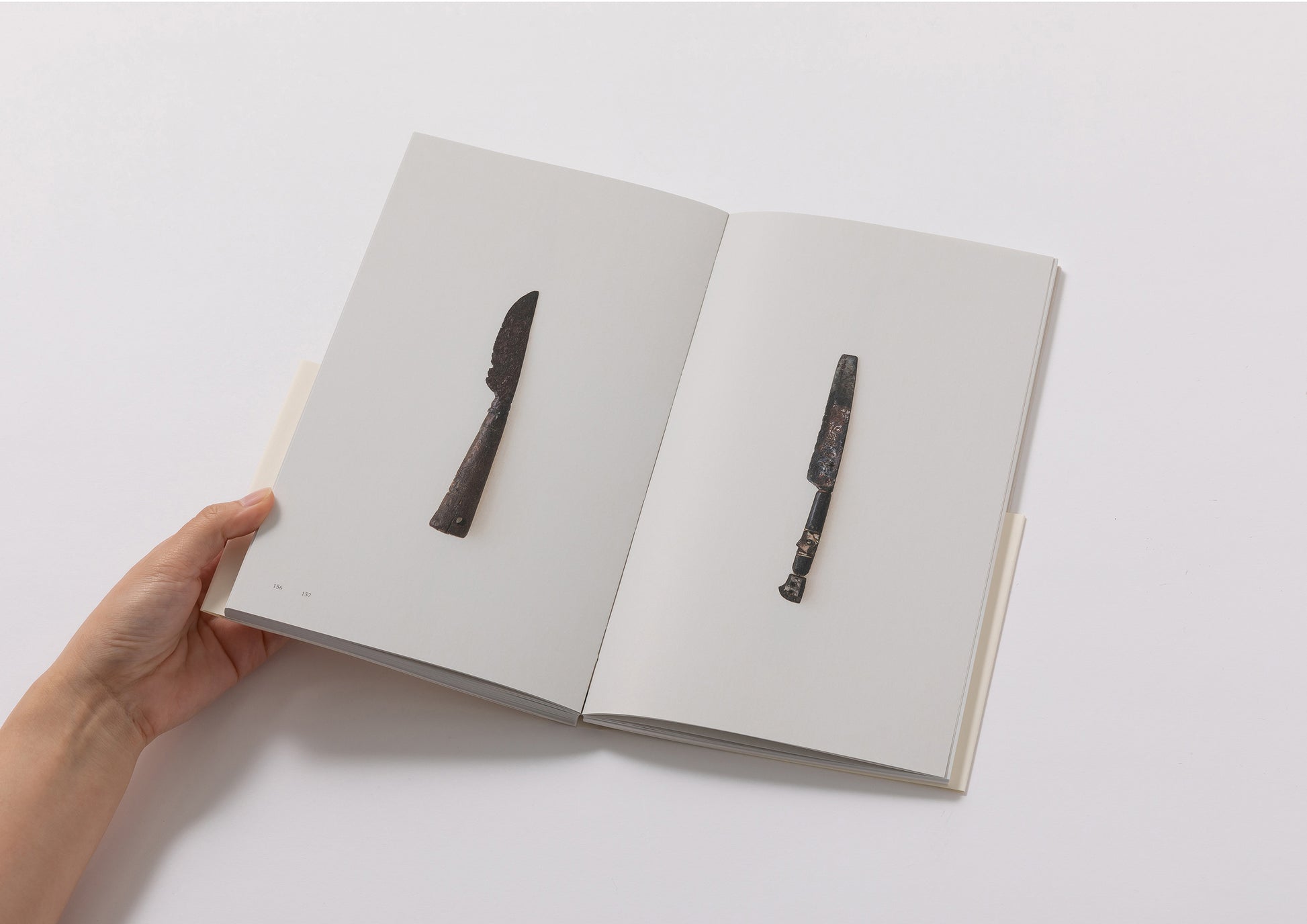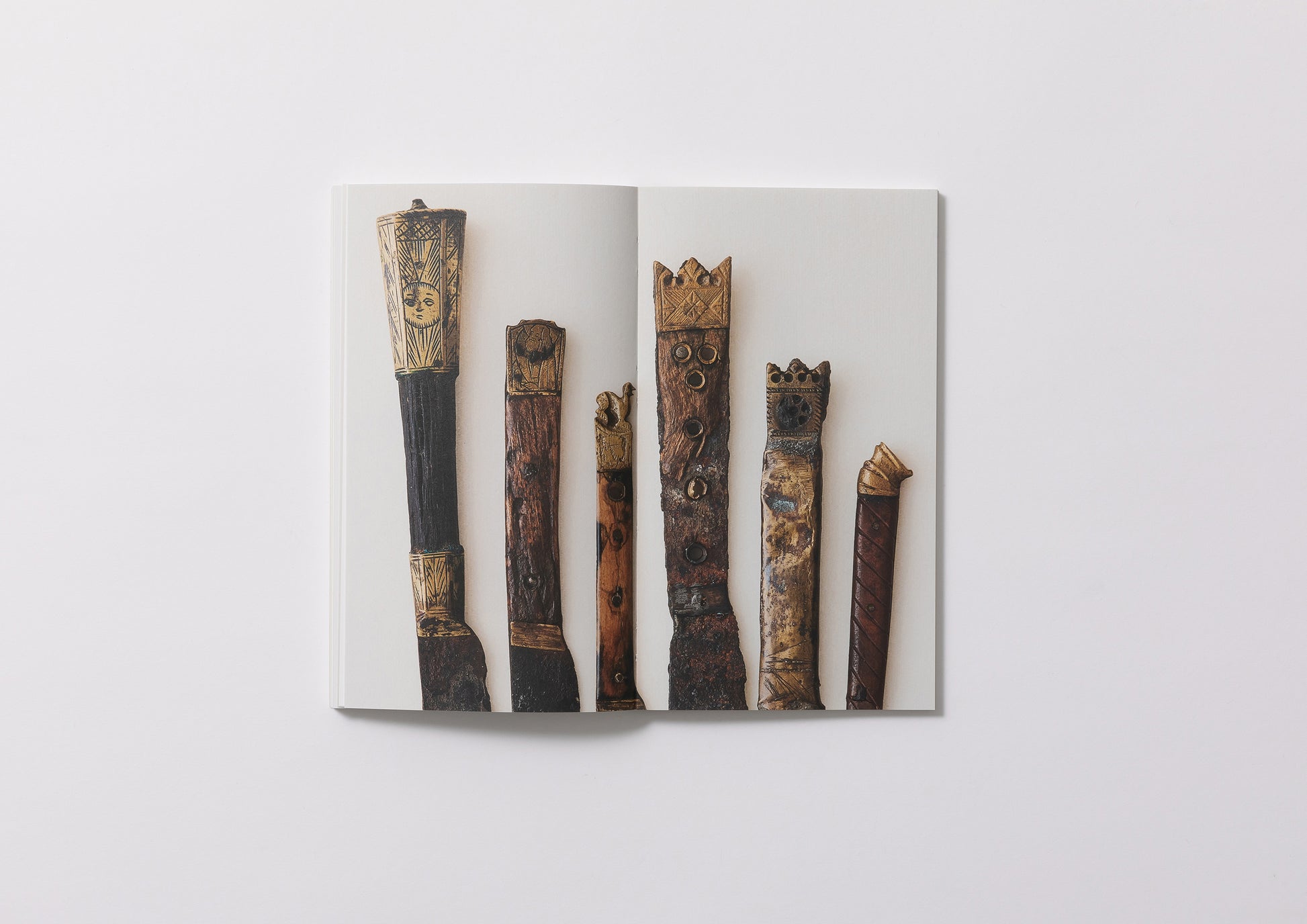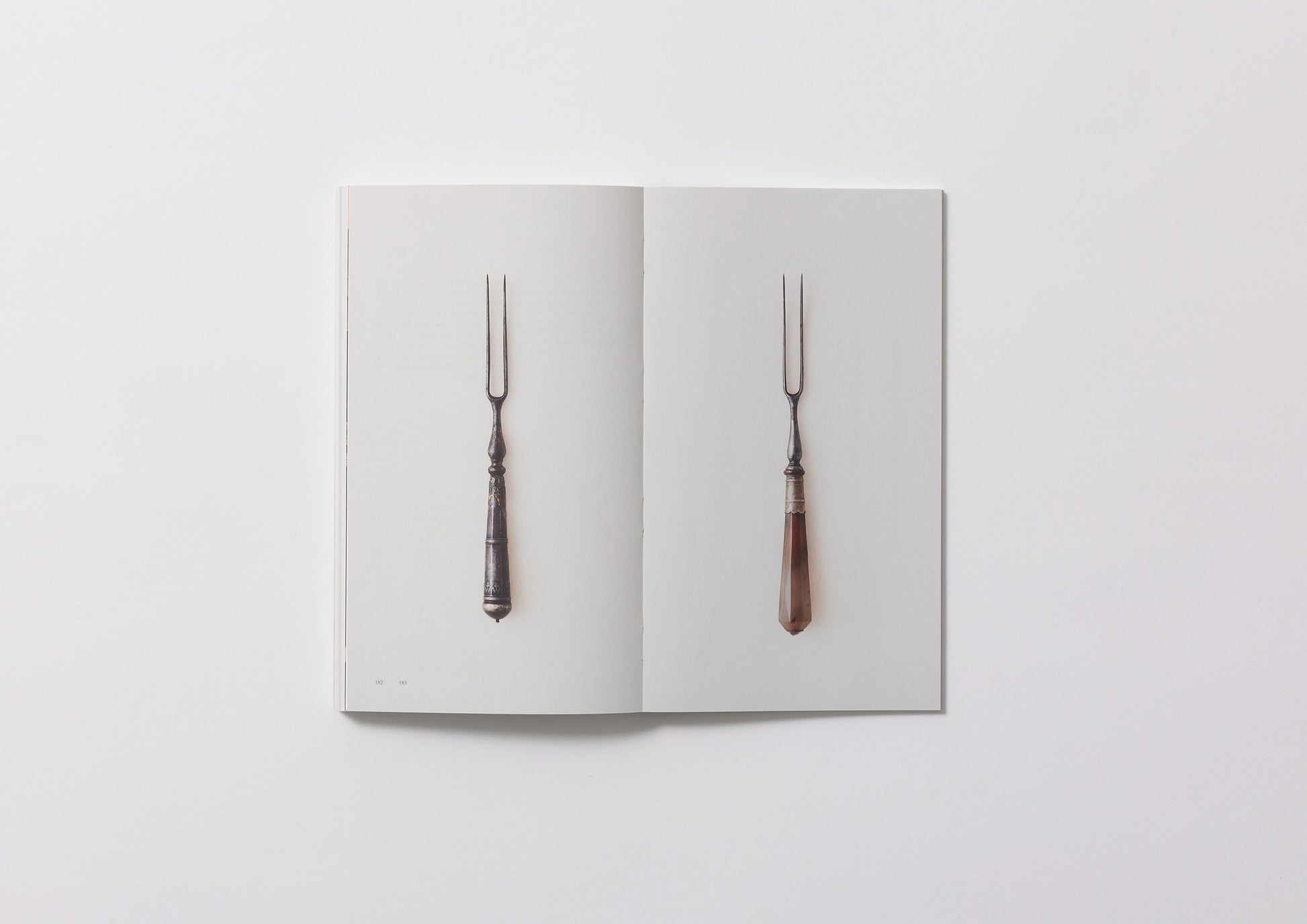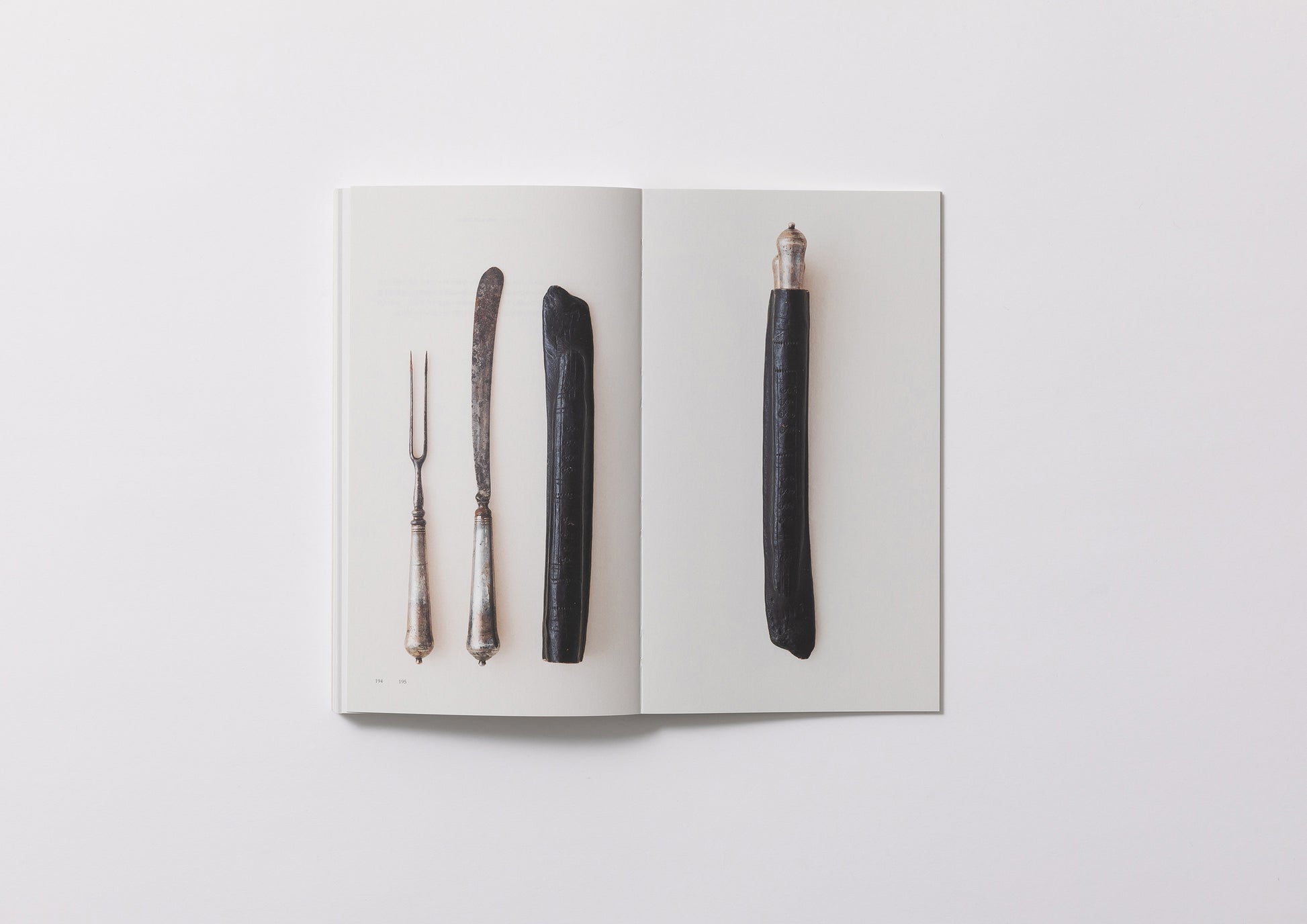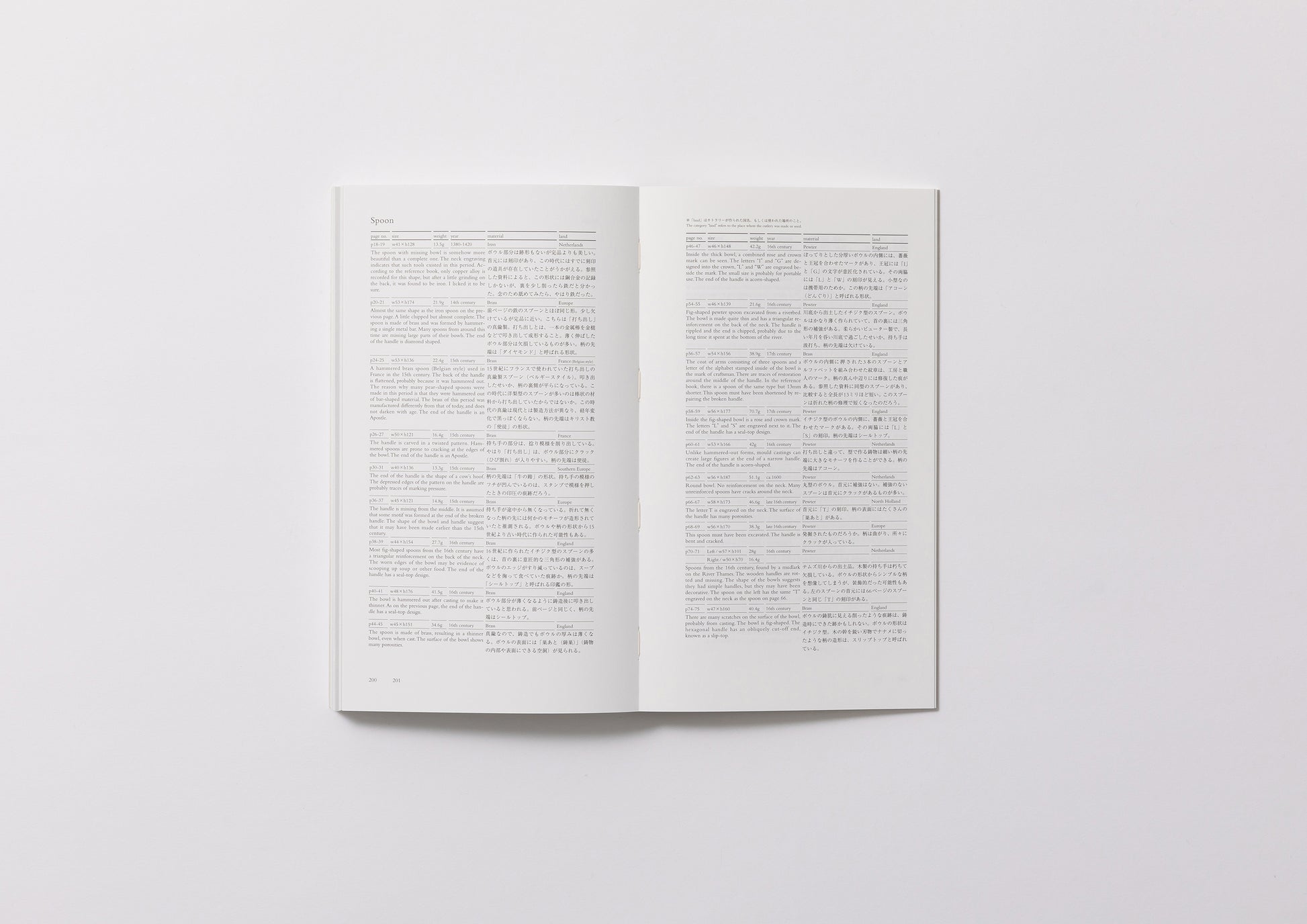Unusable spoon/Takemata Yuichi
Bibliographic Details
- Title
- The Collection of Useless Spoons / 使えないスプーン
- Author
- Yuichi Takemata / 竹俣勇壱
- Editor
- Editor + Publisher: Osamu Kushida / 櫛田 理
- Designer
- Nobuhiro Yamaguchi + Ippei Tamai / 山口信博+玉井一平
- Images
- Photo by Shizuka Suzuki / 写真:鈴木静華
- Publisher
- FRAGILE BOOKS
- Year
- 2025
- Size
- h256 × w148 × d21mm
- Weight
- 600g
- Pages
- 224
- Language
- English & Japanese / 日英対訳
- Binding
- Codex binding / コデックス装
- Printing
- 4C Offset printing / 4C オフセット
- Materials
- Main paper: Sun Lumer 4/6 105kg, Cover Paper: Arabelle White 4/6 200kg, Sleeve paper: Gmund Bio Cycle FS Cannabis 210g / 本文用紙:サンルーマー 46判 105kg 、表紙用紙:アラベール ホワイト 46判 200kg 、スリーブ用紙:グムンドバイオサイクルFS カナビス 46判 210kg
- Edition
- Limited edition of 2000 copies / 限定2000部
- Condition
- New
- ISBN
- 9784909479068
English translation: Futoshi Miyagi, Ben Davis (p208-213), Special thanks: Yoko Tatsuzawa, Toshiko Sakata, Printing: TOPPAN Colorer Inc. Akito Akagi, Shotaro Yoshida 翻訳:ミヤギフトシ、ベン・デイビス(p208-213)、特別協力:辰澤洋子、坂田敏子、赤木明登、吉田昌太郎、印刷:TOPPANクロレ
Here is a spoon.
It is a spoon that was used 700 years ago, and was excavated from the bottom of a river in the Netherlands. It has almost no artistic value, and its practical use has long since ended. I have many spoons and knives like this that are rusted, rotten, and can no longer be used. Originally, they were materials to learn how to make them.
Yuichi Takemata
-
[Editor's Note]
More than 20 years ago, craft researcher Hayao Tatsuzawa published "The Universe of Cutlery," which featured the dull shining of medieval cutlery that Kazumi Sakata had collected in Europe. This book, no exaggeration, fell like a thunderclap on the door of a metal engraver who was making custom jewelry in Kanazawa. From that day on, he carried it in his bag every day, turning the pages until they were tattered, and finally, wanting to touch the real thing in person, he began to visit the antique shop Sakata in Mejiro. That person is the author of this book, Yuichi Takemata.
Around that time, Takemata started making spoons while working on custom jewelry. Handmade, one by one. It rekindled the pure joy of making things that had been lying dormant, but it took a long time and only a small profit remained. No matter how hard you try, it's just cutlery. You hit a wall. But before you give up, you seek inspiration from medieval European craftsmen who had no choice but to make things by hand, and start looking for old cutlery.
As his collection grew, he realized that in medieval Europe, cutlery was made by artisans who made weapons and jewelry, and their clients were all wealthy and of high status. In other words, he could not find any ideas to dramatically increase productivity through craftsmanship. There are no barons in modern times who are willing to spend as much money and time on cutlery as they want. In the end, he was left with a considerable number of unusable spoons, and only their beauty consoled him.
Then, as if by some descent, the cutlery collection that had been passed on to Wajima lacquer artist Akagi Akito after Tatsuzawa's death came to Takemata. Please read the afterword of this book to find out more about the circumstances surrounding this. However, this book was a long-awaited publication project from the beginning as a sequel to The Universe of Cutlery. Against this backdrop, we have once again reprinted Tatsuzawa's essay "The Essence of the West as Seen in Cutlery," which was previously included in the book, as well as excerpts from a contribution written by Sakata.
This book is based on the Tatsuzawa Collection collected by Sakata-san and includes a total of 74 pieces of cutlery collected by the maker, Yuichi Takemata. Of the spoons, knives and forks, the most numerous spoons are designed so that both the front and back can be seen. The plain and unpretentious pagination and the fact that everything is full-sized are the designs of art director Nobuhiro Yamaguchi, but the fact that Yuichi Takemata is the maker is also a big factor.
This book does not feature any old items that have been polished so that they can be used. It does not matter whether they have a stamp that is considered to be valuable or not. Ornate and decorative cutlery is also excluded. What is important is whether the items have aged beautifully, and Sakata, Tatsuzawa, and Takemata have selected only those items that, in a sense, have seriously shouldered the fate of metal.
Mr. Takemata is a metal engraver who usually creates "usable cutlery," so in this book he kept asking about minute details, such as showing the tip of the handle up close and recording the weight to the nearest decimal point. The "explanation" at the end of the book describes the many discoveries he made while consulting various overseas materials and revising the book until the very last minute. It is impressive that he managed to research this much on his own, when there are hardly any similar books, let alone reference books, in Japan.
Between each piece of cutlery, I spliced in "paintings featuring cutlery" by Bruegel, Bosch, and Monet, and blew in words about cutlery left by Kansuke Naka, Juzo Itami, and Jacques Prevert. It was a spell cast by the editor, with the hope that a scene featuring cutlery would emerge, even if only faintly.
These spoons have passed through the hands of researchers, connoisseurs, makers, and people of all different backgrounds. I am publishing this book in the hope that these spoons, which can no longer be used, will land the next thunderclap on someone.
Finally, we would like to leave you with the words of Kazumi Sakata, which appear at the beginning of the book.
-
This collection will undoubtedly make young people who are sincerely pursuing a career in crafts think about important questions such as what standards of beauty are, and will also rescue those who are struggling or unsure about their craft from the brink, teaching many people the joy of making things and the joy of collecting things.
Kazumi Sakata
This collection will encourage young people who are dedicated to the path of craftsmanship to consider the important question of what is the standard of beauty. It will also help those who are troubled and lost in the process of making to be rescued from the brink, and will no doubt bring the joy of making and collecting to many readers.
Kazumi Sakata
◉About the product
The paper used for the sleeve case of this product contains hemp. Since it is made from natural materials, there will be individual differences. Please enjoy the different texture of each book.
Author Profile
Yuichi Takemata
Born in Kanazawa in 1975. Started studying metal engraving in 1995. Became independent in 2002. Opened "KiKU" in 2004. Focusing on custom-made jewelry, in 2005 began producing household items and tea ceremony items in addition to jewelry. Opened "sayuu" in 2010. Held exhibitions around the country, mainly at two stores. Pursuing aesthetic beauty without being bound by function or technique, he uses a variety of processes such as antique finishes and precise mirror finishes.
